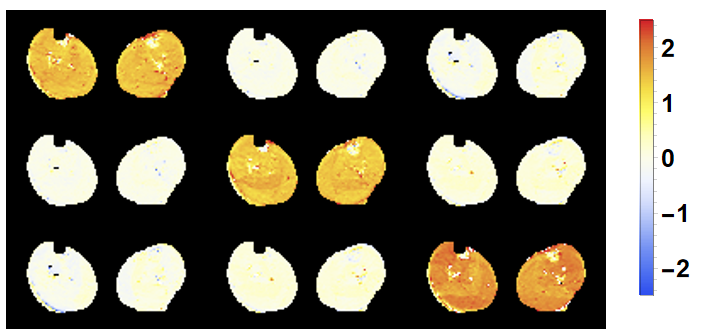TensorTools
Demonstrations.nb ››
Guide page ›› Code on Github ››
The original toolbox where the project started. The main functions in this toolbox are to fit and evaluate the diffusion tensor model. Various fitting methods are implemented (e.g. LLS, NLS, WLLS, and iWLLS). The default method is an iterative weighted linear least squares approach (Veraart et al. 2013). The tensor fitting also includes outlier detections using REKINDLE (Tax et al. 2015) and data preparation includes drift correction (Vos et al. 2017). Back››


References
- Veraart, Jelle, Jan Sijbers, Stefan Sunaert, Alexander Leemans, and Ben Jeurissen. 2013. “Weighted linear least squares estimation of diffusion MRI parameters: Strengths, limitations, and pitfalls.” NeuroImage 81 (November). Elsevier Inc.: 335–46. link››.
- Tax, Chantal M.W., Willem M. Otte, Max A. Viergever, Rick M. Dijkhuizen, and Alexander Leemans. 2015. “REKINDLE: Robust Extraction of Kurtosis INDices with Linear Estimation.” Magnetic Resonance in Medicine 73 (2): 794–808. link››.
- Vos, Sjoerd B., Chantal M. W. Tax, Peter R. Luijten, Sebastien Ourselin, Alexander Leemans, and Martijn Froeling. 2017. “The importance of correcting for signal drift in diffusion MRI.” Magnetic Resonance in Medicine 77 (1): 285–99. link››.